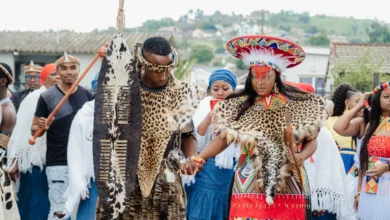The cheongsam, also known as the qipao, is more than just a dress; it’s a symbol of Chinese heritage, elegance, and tradition. This iconic garment, with its distinctive high collar, fitted waist, and side slits, has graced countless occasions, from everyday life to the most significant cultural celebrations. This article will explore the fascinating history of the cheongsam and its prominent role in two of the most important events in Chinese culture: Chinese New Year celebrations and weddings.
A Brief History of the Cheongsam
To truly appreciate the cheongsam’s significance, it’s important to understand its origins. The term “cheongsam” translates to “long dress” in Cantonese, while “qipao” is its Mandarin counterpart. While today’s cheongsam is often associated with Shanghai in the early 20th century, its roots are far older, tracing back to the Manchu people who ruled China during the Qing Dynasty (1644-1912).
Initially, the qipao was a loose, full-length garment worn by both men and women. It wasn’t until the early 20th century that it underwent a significant transformation. In cosmopolitan Shanghai, a hub of fashion and cultural exchange, the qipao was reimagined by Chinese socialites and designers.
This modernized version, characterized by its form-fitting silhouette, became the sophisticated and elegant style that we recognize today. Its popularity grew rapidly and the cheongsam became a symbol of modernity and female empowerment, quickly spreading throughout China and beyond.
See also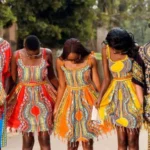 The Dashiki’s Presence in African Naming Ceremonies and Festivals
The Dashiki’s Presence in African Naming Ceremonies and Festivals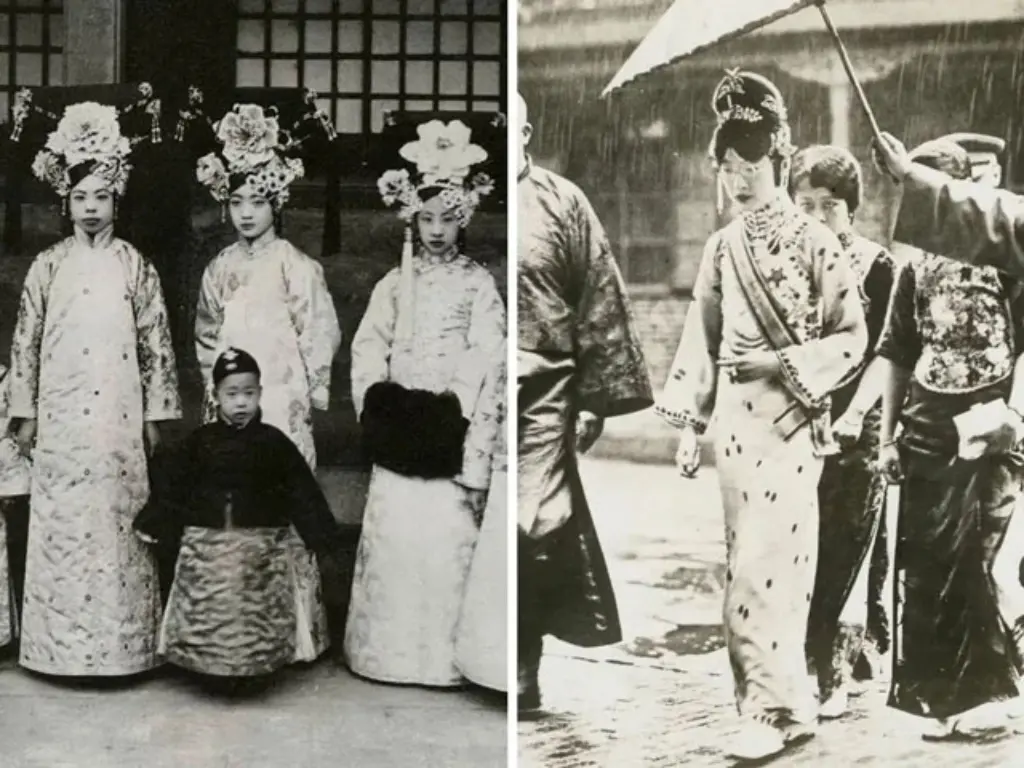
The Evolution of the Cheongsam
The cheongsam’s design has evolved significantly over the decades. Early versions were typically made from silk and featured simple designs. However, the 1920s and 30s saw a surge of creativity, with designers experimenting with new fabrics, patterns, and embellishments. The hemline rose, waistlines were more defined, and new sleeve lengths were introduced. These innovations reflected broader social changes in China, including greater freedom and expression for women. The variations are plentiful including:
- Sleeves: From long and wide to short, cap-like, or even sleeveless styles.
- Length: From floor-length gowns to knee-length dresses and even modern, above-the-knee variations.
- Fabrics: From traditional silk and brocade to more modern fabrics like rayon and cotton.
- Embellishments: From intricate embroidery and beadwork to simpler, minimalist designs.
This adaptability has allowed the cheongsam to remain relevant and fashionable for generations, cementing its status as a truly timeless piece of clothing.
The Cheongsam in Chinese New Year Celebrations
Chinese New Year, also known as the Spring Festival, is the most important holiday in Chinese culture. It’s a time for family reunions, feasting, and honoring traditions. The cheongsam holds a significant place in these celebrations, symbolizing joy, prosperity, and new beginnings. Wearing a cheongsam during Chinese New Year is not only a stylish choice but also a way to connect with one’s heritage and celebrate the rich cultural tapestry of the festival.
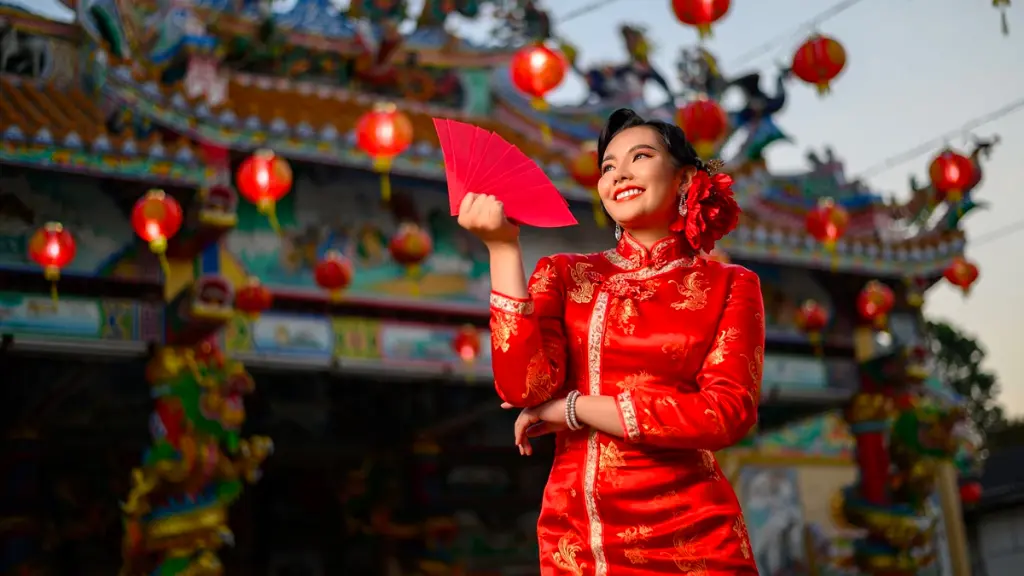
Symbolism and Color Choice
The colors chosen for a cheongsam during Chinese New Year are not arbitrary. Red, in particular, is extremely popular. Red is considered the luckiest color in Chinese culture, representing happiness, good fortune, and prosperity. It’s believed that wearing red during the New Year will bring good luck and ward off evil spirits. Gold is another popular color, symbolizing wealth and abundance. Cheongsams worn for the New Year often feature embroidery and patterns depicting auspicious symbols like dragons, phoenixes, and flowers.
See also The Filipino Barong Tagalog in Religious and State Ceremonies
The Filipino Barong Tagalog in Religious and State CeremoniesOther symbolic elements include:
- Dragon and Phoenix: Represent power, prosperity, and balance. Often seen together, symbolizing yin and yang.
- Flowers: Peonies are associated with wealth and honor, while plum blossoms represent resilience and new beginnings.
- Embroidered Motifs: Patterns featuring knots, coins, and other auspicious images are believed to bring good luck.
These symbols further enhance the cheongsam’s significance during Chinese New Year, making it a garment that embodies both tradition and hope for the future.
Cheongsams for Family Gatherings
During Chinese New Year, families often gather for large meals and celebrations. Wearing a cheongsam is a way for women to honor their families and the traditions passed down through generations. The garment can be passed down to the next generations and hold sentimental values. It’s also a way to show respect for elders and create a festive atmosphere.
Family members might even choose to wear coordinating cheongsams with similar colors or patterns, strengthening the bond and unity of the family. The elegance of the cheongsam stands out during family portraits, creating a memorable and beautiful experience for everyone.
Modern Adaptations and Contemporary Styles
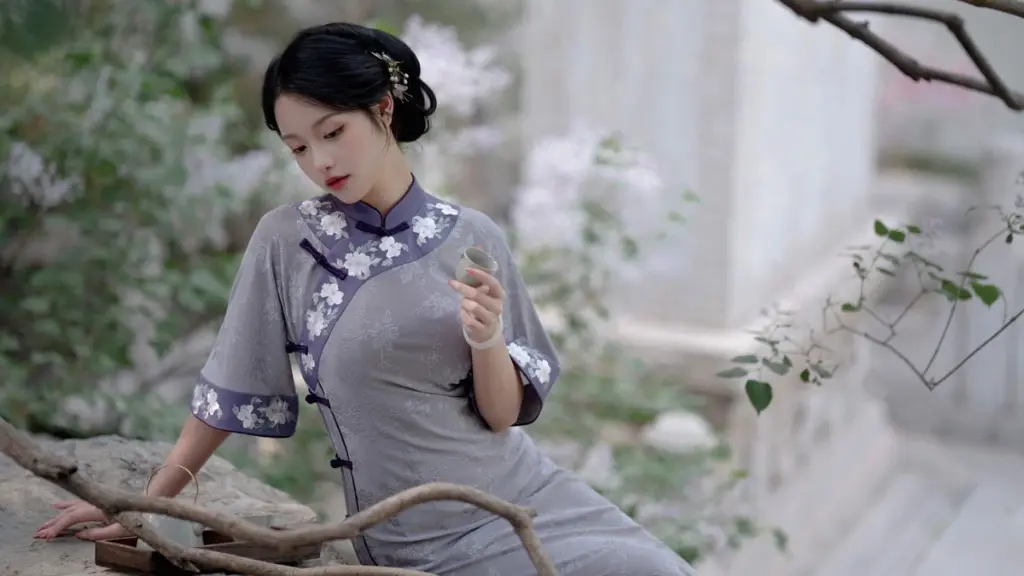
While traditional cheongsams are still widely worn during Chinese New Year, modern designers have adapted the garment to suit contemporary tastes. We see a number of variations and evolutions including:
- Modern Fabrics: More comfortable and practical fabrics like cotton and blends have been introduced, making the cheongsam more wearable for everyday activities.
- Contemporary Designs: New cuts, lengths, and embellishments have been added, resulting in cheongsams that are both stylish and respectful of tradition.
- Fusion Styles: Some designers incorporate Western design elements, creating fusion garments that combine traditional Chinese aesthetics with modern silhouettes.
These modern interpretations allow the cheongsam to appeal to a wider audience while retaining its connection to Chinese culture. These variations allow individuals to express their personal style while still honouring tradition.
The Cheongsam in Chinese Weddings
The cheongsam is also a popular choice for brides during Chinese weddings. It is often worn during the traditional tea ceremony and sometimes even as the primary wedding dress. The cheongsam in a wedding context is chosen for its beauty, elegance, and cultural significance. This showcases the bride’s respect for her heritage.
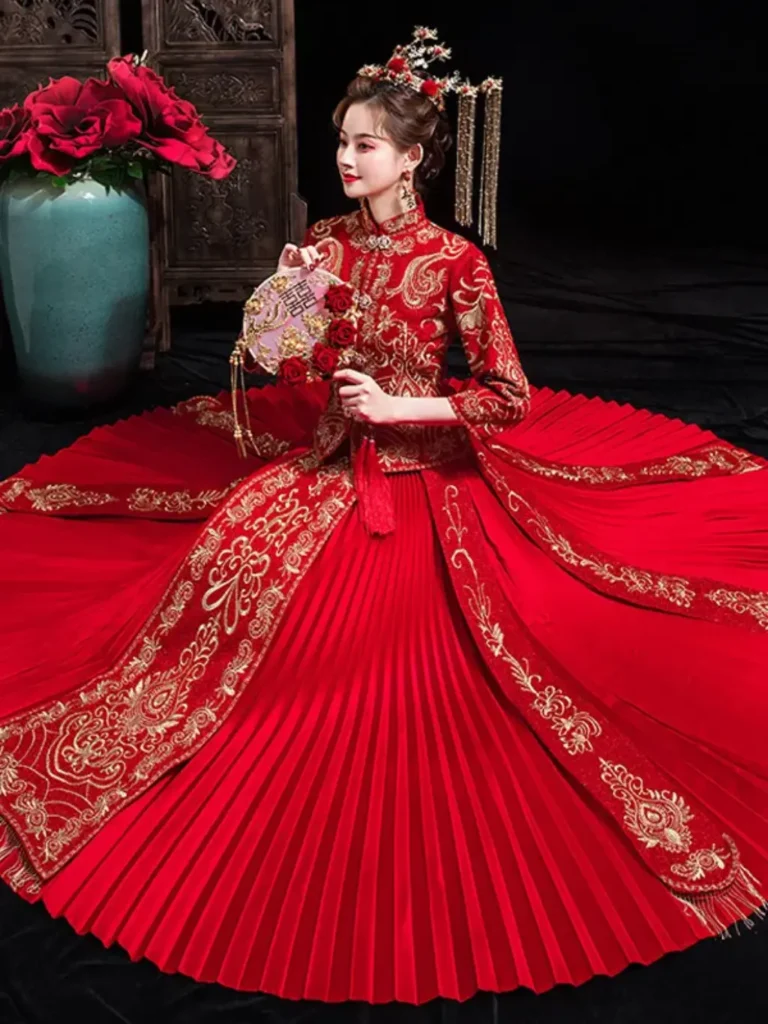
While western-style wedding dresses have also gained popularity, the cheongsam remains a beloved option, symbolizing good fortune, marital bliss, and the joining of two families.
The Traditional Tea Ceremony
The tea ceremony is a significant ritual in Chinese weddings, where the bride and groom serve tea to their elders as a sign of respect and gratitude. The cheongsam is often chosen as the outfit for the bride during this ceremony. Red is the most common color for a wedding cheongsam, as it represents luck, happiness, and prosperity.
Gold is also favored, symbolizing wealth and good fortune for the new couple. The cheongsam worn during the tea ceremony is often intricately decorated with auspicious motifs, such as phoenixes, dragons, and peonies, further enhancing its significance.
The traditional elements include:
- Red: The dominant color in bridal cheongsams, signifying joy and good luck.
- Gold: Often used as an accent color in embroidery, symbolizing wealth and prosperity.
- Phoenix and Dragon: These symbols of yin and yang represent the balance and harmony of a marriage.
- Peonies and Lotus Flowers: Peonies represent beauty and abundance, while lotus flowers symbolize purity and new beginnings.
These elements together create a stunning and culturally significant outfit for the bride.
Cheongsam Variations for the Wedding
While the red cheongsam is the most traditional choice for a Chinese wedding, there is room for creativity and personal preference. Some brides choose different colors, such as pink, which symbolizes happiness and sweetness, or white, which signifies purity. Modern interpretations of the bridal cheongsam often include variations in length, sleeve style, and embellishment.
Some brides even choose to wear different cheongsams throughout the wedding day, incorporating a variety of styles and colors into their celebration. This flexibility allows brides to express their individual style while still honoring cultural traditions.
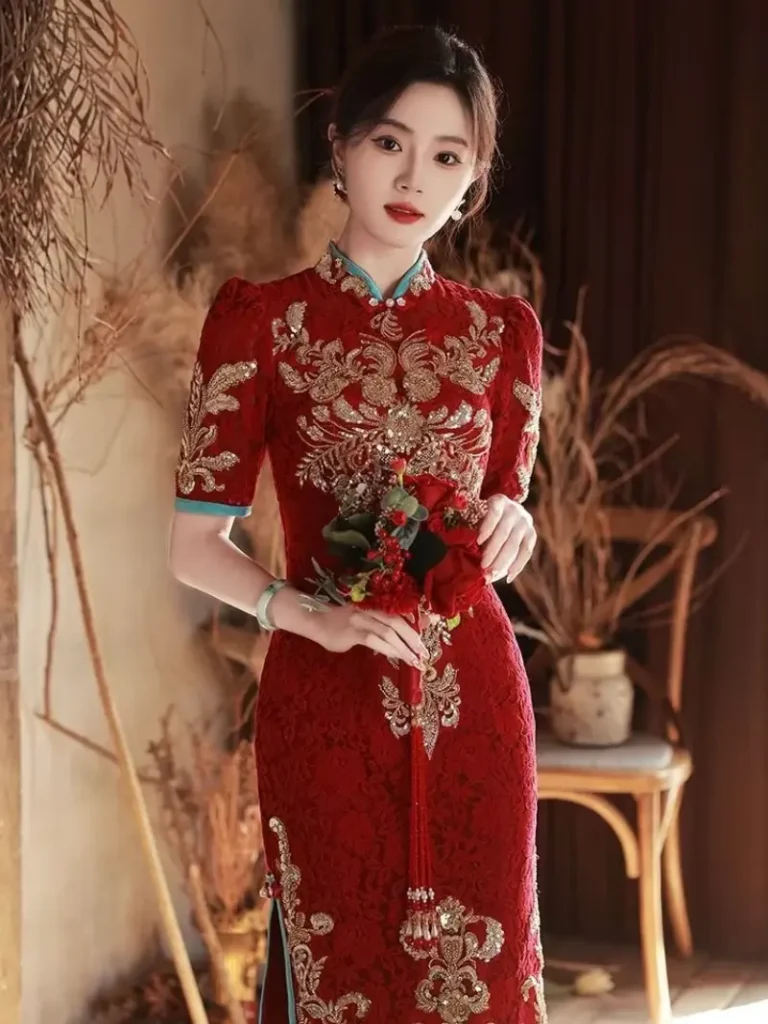
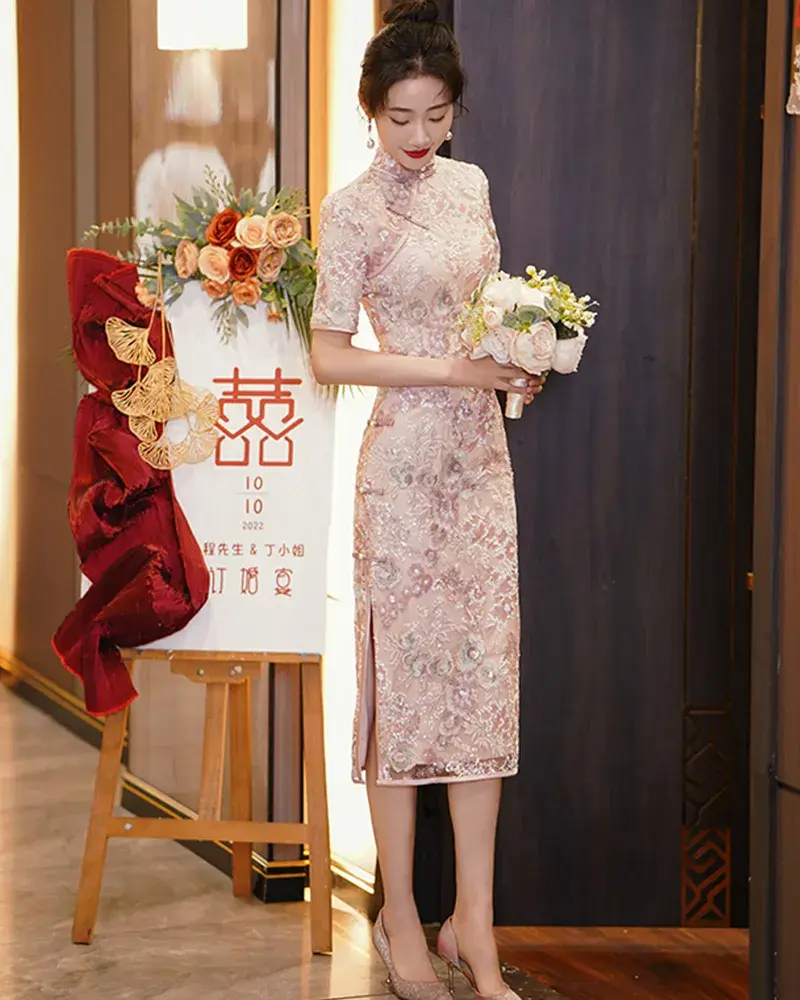
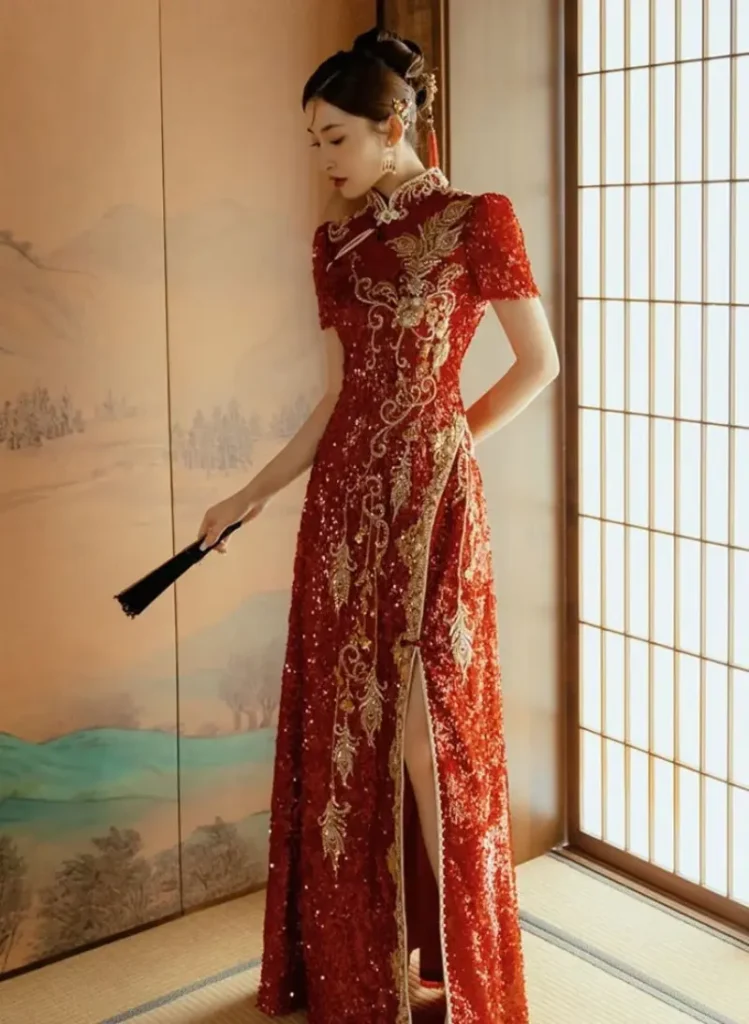
Some styles include:
- Modern Lengths: Some brides prefer knee-length or shorter cheongsams that are more comfortable for movement and dancing.
- Sleeves: Sleeveless, cap sleeves, or modern cuts offer more options for personal taste and comfort.
- Fabrics: Brocade, silk, and other luxury materials create a stunning look and feel.
The Cheongsam as a Wedding Dress
In modern Chinese weddings, many brides choose to wear a cheongsam as their main wedding dress. While the white western-style gown has gained popularity, the cheongsam still holds a special place in many brides’ hearts. It’s a powerful statement of cultural pride. In recent years, there is a renewed interest in the cultural roots of a wedding, with some couples wanting to combine both western and traditional Chinese elements in their ceremonies.
The cheongsam is often paired with traditional Chinese wedding accessories, such as phoenix crowns, jade jewelry, and embroidered shoes, creating a beautiful and harmonious blend of tradition and modernity.
Choosing a cheongsam as a wedding dress is:
- A way to honour cultural heritage.
- A choice that adds elegance and sophistication to the event.
- A unique choice that celebrates the couples connection with tradition.
Conclusion: The Enduring Legacy of the Cheongsam
The cheongsam is more than just a garment; it’s a cultural icon that encapsulates the rich history and traditions of China. From its origins in the Qing Dynasty to its modern interpretations, the cheongsam has consistently adapted and evolved while retaining its fundamental elegance and cultural significance.
Whether it’s worn during the joyous celebrations of Chinese New Year or the sacred union of marriage, the cheongsam embodies the enduring spirit of Chinese culture. It serves as a beautiful reminder of heritage and the importance of embracing traditions while adapting to modern times.
Its adaptability and beauty have solidified its status as a timeless piece of clothing that continues to captivate and inspire people around the world. It’s a symbol that reminds us of cultural pride, the beauty of traditions, and the significance of embracing our heritage. The cheongsam continues to tell a story, connect generations, and inspire future designers and wearers.“`




